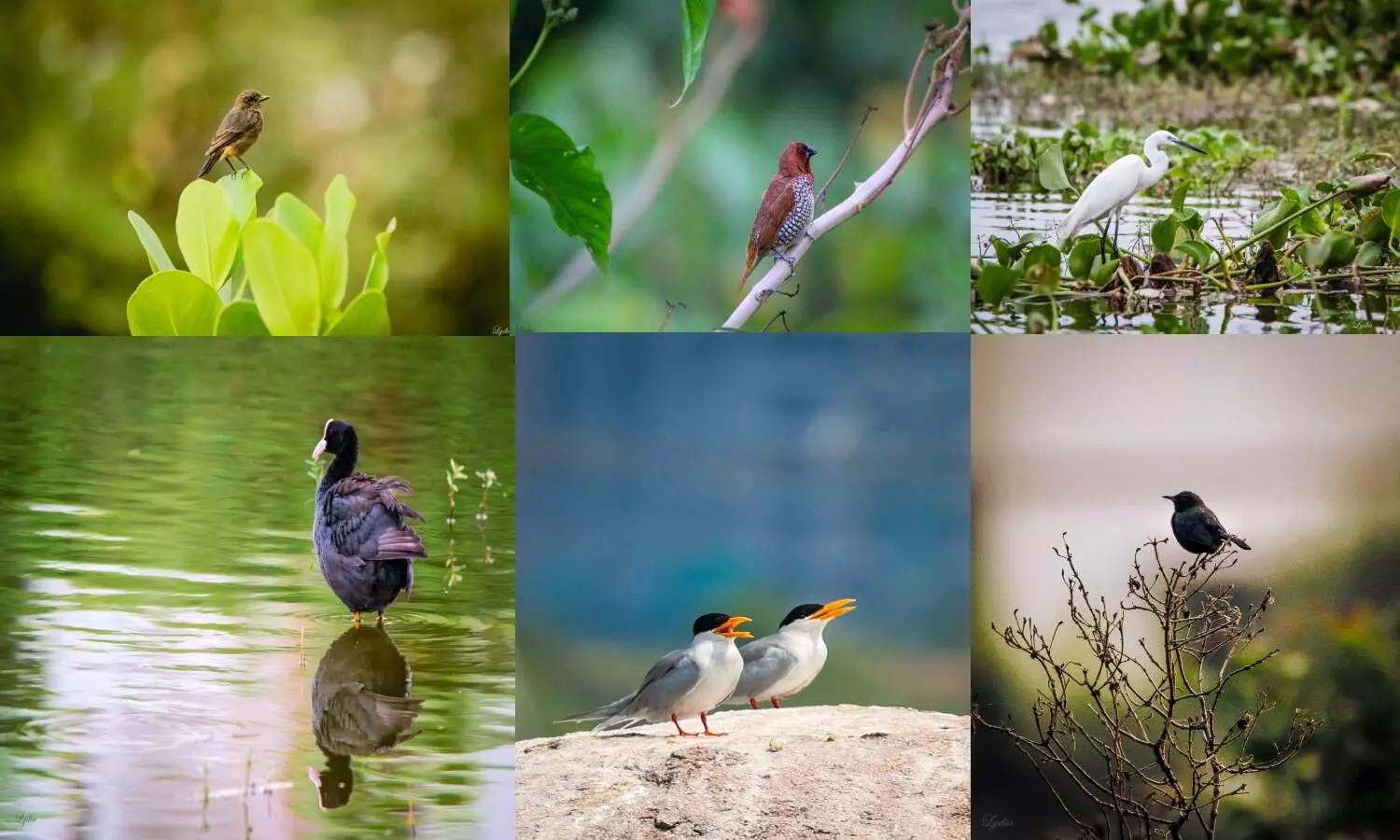Nallagandla lake, a paradise for bird watchers
By Amrit Mishra
Hyderabad: We moved to Nallagandla in early 2019. It was probably the lake that helped us decide to move here. It was a clean lake, unlike some of the other lakes in Hyderabad that we had been to, and didn't seem to be infested with filth or hyacinth.
After moving in, it was a joy to watch the sunrise over the lake. The sun rose amid a cornucopia of colours and light in different seasons. On sunny afternoons during monsoons, brilliant rainbows formed over the lake. On clear bright days, the lake was blue, on cold winter mornings it was white, on thunderous overcast days it was dark and ominous, and during heavy rain it was a swelling pulsating mass of fearsome water.
The lake dutifully and truly reflected the sky, weather, and the mood. It was all great till we realized that we had been neglecting a more interesting and engaging facet of the Nallagandla lake - its birds. It was probably the cormorants that drew our attention first.
Standing all day on the rocky island in the north-west part of the lake, holding their wings up to dry, they resembled devout members of a cult mimicking crucifixion. We had seen them flying from close and had dismissed them as black geese.
On a trip to Kanha last year we were told that these were cormorants, specifically great cormorants and wing-drying was characteristic of these birds. Cormorants dive deep into water for food and they need their feathers to soak water and get heavy to assist in diving.
These feathers aren't oily like those of ducks but get water-logged and help the bird sink. Therefore, after diving for food, the cormorants dry their wings to get rid of the water. This piece of information had us intrigued and we started taking an interest in the avian life of the Nallagandla lake.
On our frequent visits to the lake to watch and take photos of birds, we noticed that the lake has its own resident birds as well as a few visitors. Residents include the great cormorant, little cormorant, great egret, intermediate egret, little egret, kingfisher, grey heron, Eurasian coot (also called the common coot), Eurasian moorhen (also called the common moorhen), Indian pond heron, Chinese pond heron, and the grey-headed swamphen among others. The large swathe of marsh and permanent water weed on the south-west edge of the lake provide perfect habitats for the swamphens and moorhens which are known to prefer well-vegetated lakes.
Of late, we have spotted a few river terns in the lake. It might be too early to say if these are new residents or passersby. Occasionally, we have also spotted a pair of black-winged stilts. These seem to be shy and fly away when other birds, especially egrets, land on their rocks.
Earlier this year, after summer and before the onset of monsoons in June, a large number of spot-billed pelicans along with a few painted storks visited the lake for many days in a row. Spot-billed pelicans aren't migratory but are known to travel locally to other lakes in the non-breeding season. Similarly, painted storks aren't migratory birds but travel short distances in response to changes in food availability or weather.
If these birds visit again, it will be interesting to see if they stay and breed at the Nallagandla lake. Pelicans and painted storks build their nests close to each other, often on the same trees. Nallagandla lake has plenty of Deccan thorn outcrops and a few shrubs that can serve as breeding grounds for these birds.
Food is a critical requirement for the resident and migratory birds of the lake. Daily fishing by local fishermen in the lake indicates that the lake abounds in fish. We've witnessed pelicans swallowing fish with their bills and egrets swooping down to catch fish in their beaks.
This vibrant underwater fauna is essential for the birds. Recently, there had been an incident of treated water from one of the neighbouring communities errantly flowing into the lake resulting in dead fish. But thanks to local vigilance, the leak was fixed quickly and natural balance was restored.
Apart from the aquatic birds, the lake and the surrounding vegetation also support a large number of inland birds such as the little green bee-eater (also called the Asian green bee-eater), greater coucal, Indian robin, red-vented bulbul, pied bushchat, sun bird, white-browed wagtail, ashy prinia, spotted dove, dusky crag martin (a swallow), house sparrow, scaly-breasted munia, and many others.
It's important that the lake, its periphery, and the surrounding vegetation are protected so that Nallagandla lake can prosper and provide a good bird-watching experience. The onus is on the residents of the nearby communities and the government to make this happen.
Authors- Amrita Mishra @BadmaasToka and Lydia Grace @LydiaGrrace
Disclaimer: The views expressed in this article are the opinions of the author and do not represent the views of NewsMeter. We have not changed, added, or omitted anything to the text. NewsMeter is not responsible for the accuracy of the facts and the content of external links included in the article.